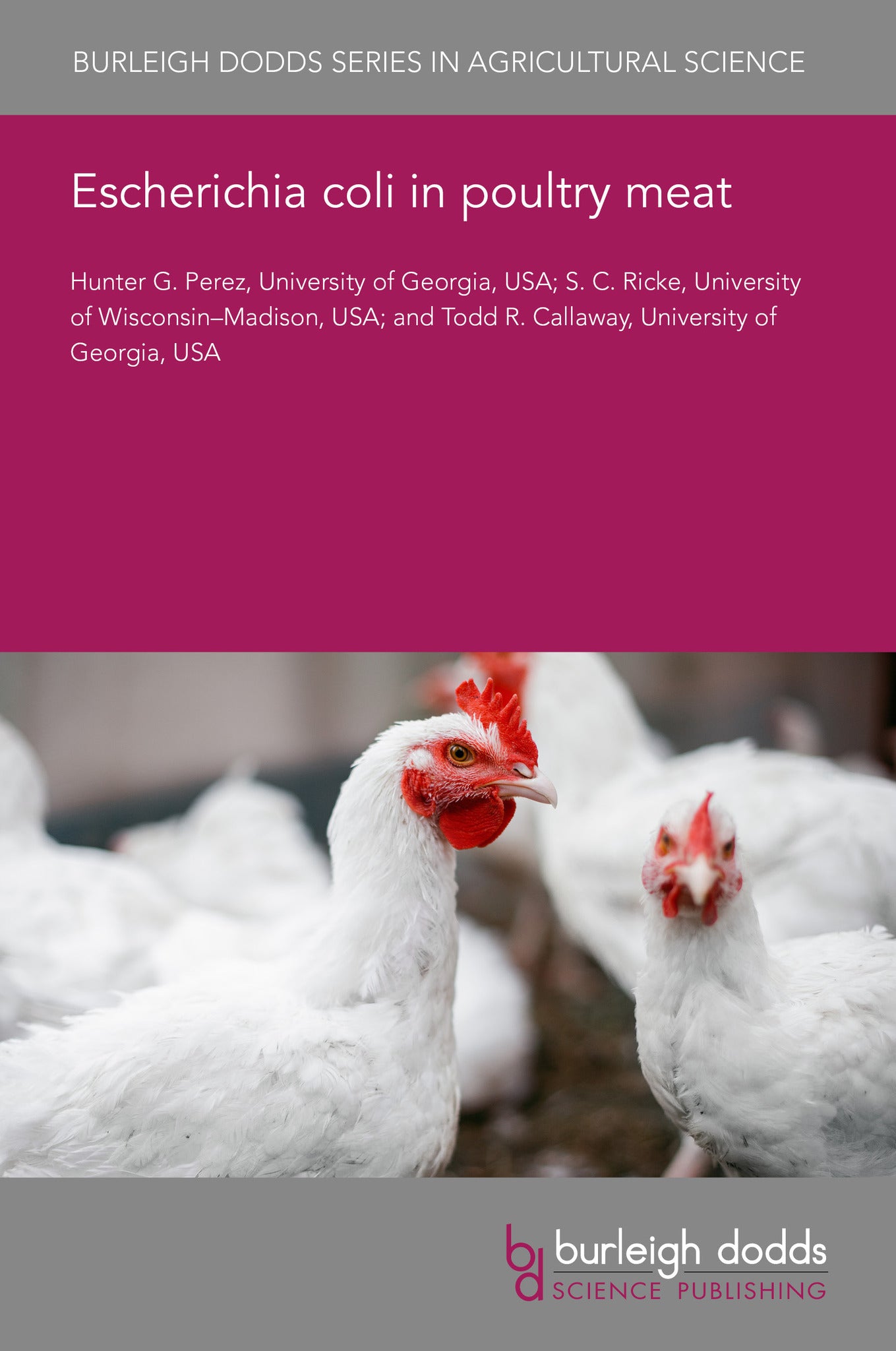We're sorry. An error has occurred
Please cancel or retry.
Escherichia coli in poultry meat

Some error occured while loading the Quick View. Please close the Quick View and try reloading the page.
Couldn't load pickup availability
- Format:
-
09 April 2025

Escherichia coli is a common gastrointestinal bacteria that has a vast genetic, physiologic, and biochemical diversity in E. coli, which allows this organism to thrive in many environments. But E. coli contains several pathogenic groups (e.g., pathotypes) which can cause disease and morbidity in poultry, reduce poultry producers profitability, and can impact the health and safety of human consumers of poultry meat products. As the use of antimicrobials as growth promoters has become increasingly restricted, alternatives to antimicrobials (ATA) have become a higher priority. The use of probiotics, prebiotics, postbiotics, bacteriophage, and organic acids have the potential to alter the gastrointestinal microbial population and to reduce pathogenic groups of E. coli. Thus strategies that can reduce these important pathogens from poultry are critical to ensuring the efficient production of poultry meat, but also the safety of these important sources of protein for humans.

TECHNOLOGY & ENGINEERING / Agriculture / Animal Husbandry, Poultry farming, TECHNOLOGY & ENGINEERING / Agriculture / Sustainable Agriculture, Sustainable agriculture

- 1 Introduction
- 2 Pathotypes of Escherichia coli which impact poultry
- 3 Shiga toxin-producing/verotoxigenic Escherichia coli as a foodborne pathogen in poultry
- 4 Sources of E.coli contamination
- 5 Control of E.coli: the problem of antibiotic resistance
- 6 Strategies to reduce Escherichia coli in poultry on the farm
- 7 Conclusion
- 8 Where to look for further information
- 9 References



